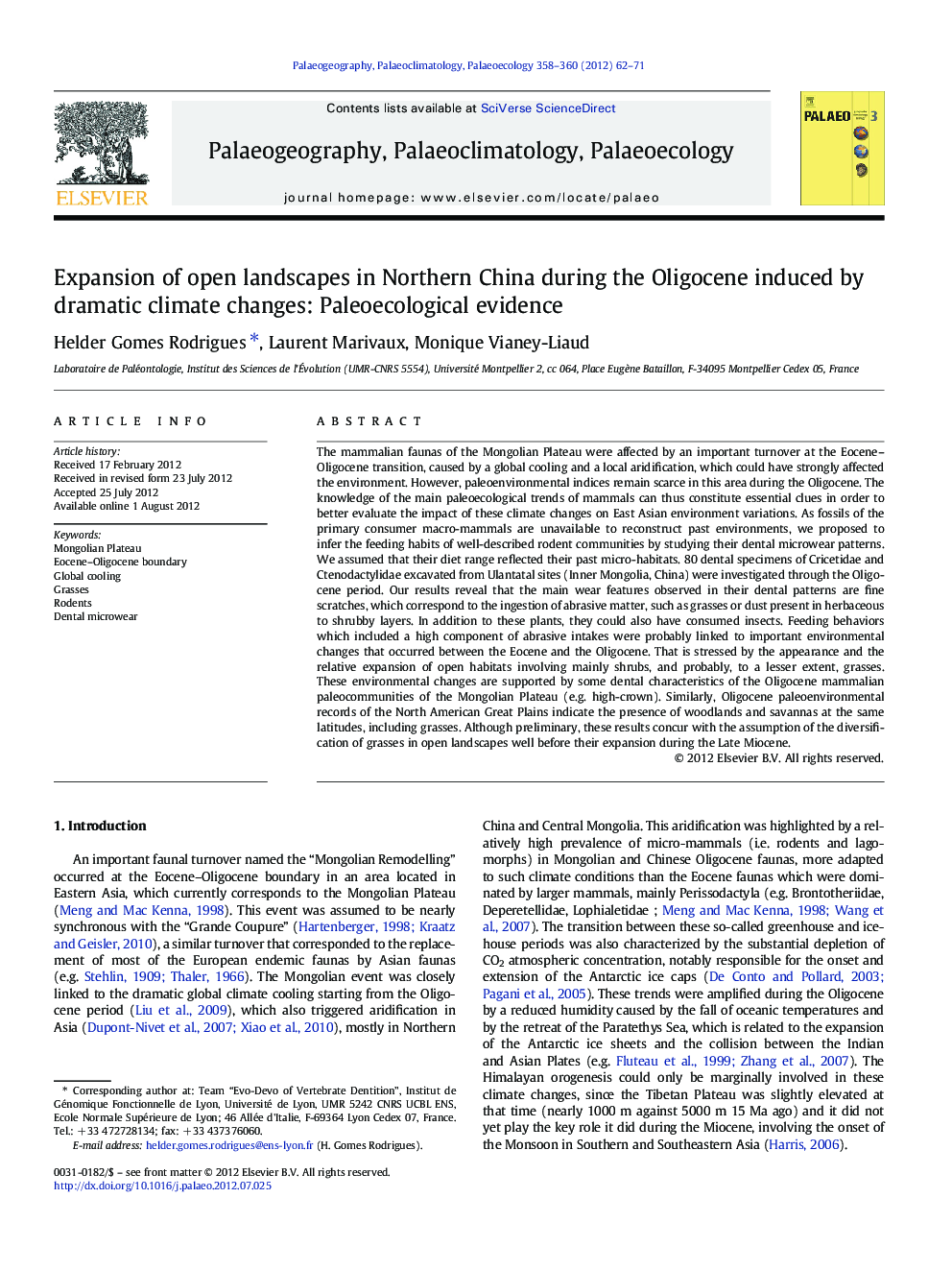| Article ID | Journal | Published Year | Pages | File Type |
|---|---|---|---|---|
| 4466670 | Palaeogeography, Palaeoclimatology, Palaeoecology | 2012 | 10 Pages |
The mammalian faunas of the Mongolian Plateau were affected by an important turnover at the Eocene–Oligocene transition, caused by a global cooling and a local aridification, which could have strongly affected the environment. However, paleoenvironmental indices remain scarce in this area during the Oligocene. The knowledge of the main paleoecological trends of mammals can thus constitute essential clues in order to better evaluate the impact of these climate changes on East Asian environment variations. As fossils of the primary consumer macro-mammals are unavailable to reconstruct past environments, we proposed to infer the feeding habits of well-described rodent communities by studying their dental microwear patterns. We assumed that their diet range reflected their past micro-habitats. 80 dental specimens of Cricetidae and Ctenodactylidae excavated from Ulantatal sites (Inner Mongolia, China) were investigated through the Oligocene period. Our results reveal that the main wear features observed in their dental patterns are fine scratches, which correspond to the ingestion of abrasive matter, such as grasses or dust present in herbaceous to shrubby layers. In addition to these plants, they could also have consumed insects. Feeding behaviors which included a high component of abrasive intakes were probably linked to important environmental changes that occurred between the Eocene and the Oligocene. That is stressed by the appearance and the relative expansion of open habitats involving mainly shrubs, and probably, to a lesser extent, grasses. These environmental changes are supported by some dental characteristics of the Oligocene mammalian paleocommunities of the Mongolian Plateau (e.g. high-crown). Similarly, Oligocene paleoenvironmental records of the North American Great Plains indicate the presence of woodlands and savannas at the same latitudes, including grasses. Although preliminary, these results concur with the assumption of the diversification of grasses in open landscapes well before their expansion during the Late Miocene.
► We reconstituted paleoenvironments in Northern China during Oligocene cooling. ► Dental microwear patterns of rodent paleocommunities emphasized abrasive diets. ► Feeding habits of rodents stressed a putative occurrence of grasses. ► An important herbaceous to shrubby layer was dominant and induced by aridification. ► Expansion of open environments was supported as in North American Great Plains.
